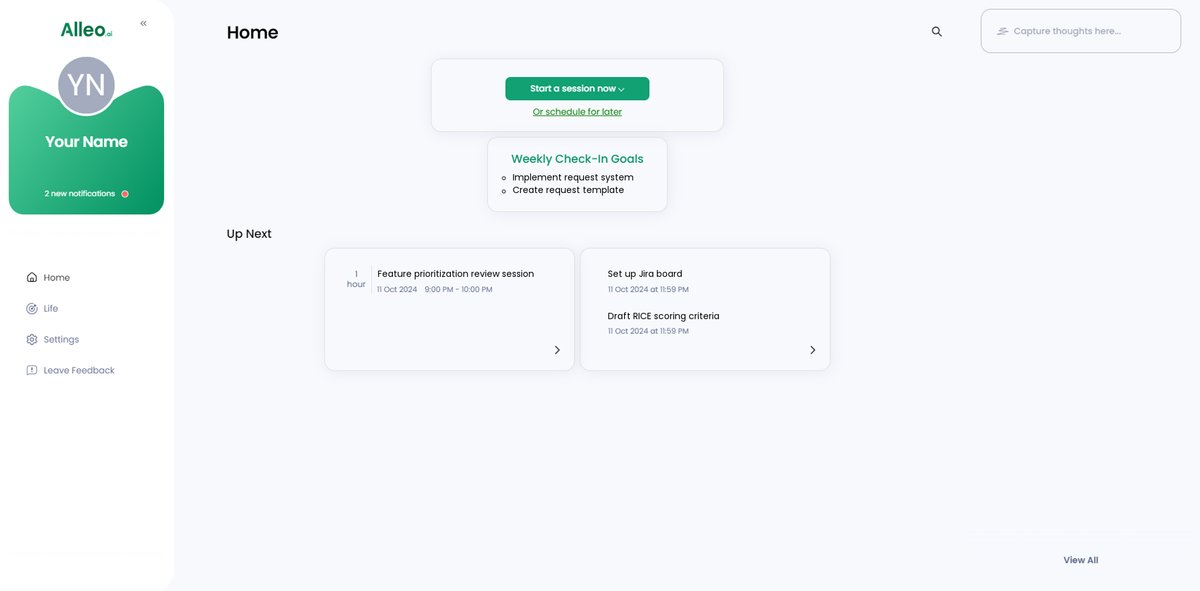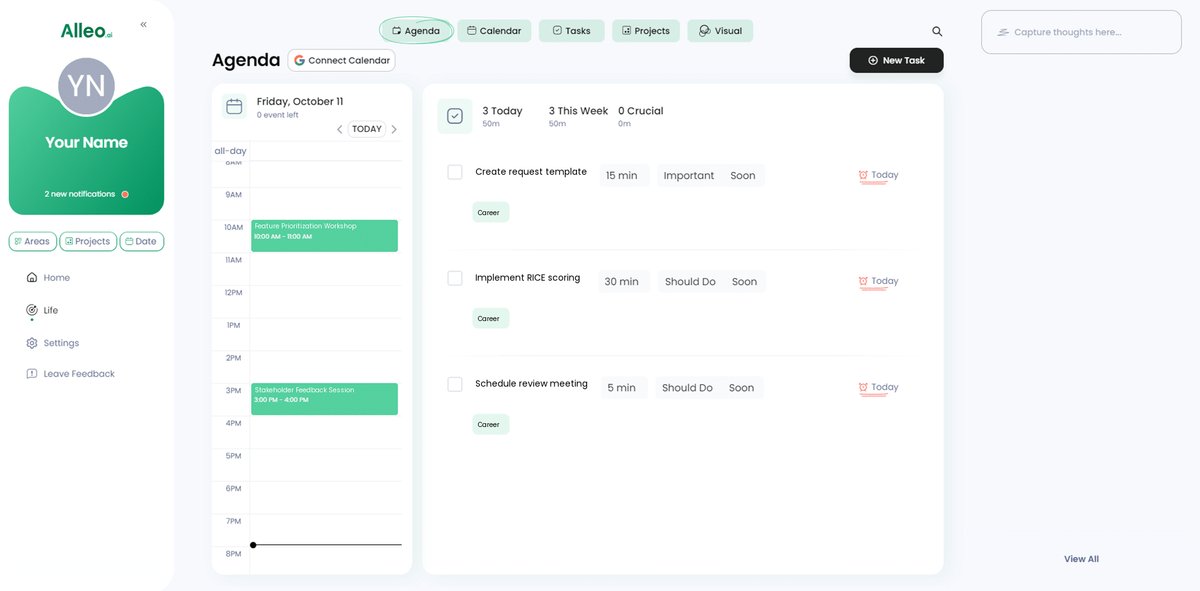Product Managers: 6 Proven Strategies to Effectively Prioritize Feature Requests
Are you often overwhelmed by the constant influx of feature requests and ideas from users? Prioritizing product feature requests can be a challenging task for product managers.
As a product manager, you likely face the challenge of deciding what to prioritize while keeping development manageable and user-focused. Effective prioritization is crucial for maintaining a user-focused and streamlined development process. Feature prioritization techniques and user feedback analysis play key roles in product roadmap planning.
In my experience helping clients navigate these challenges, I’ve seen firsthand the impact of structured prioritization on productivity. I understand the stress that can arise without proper product backlog management and data-driven decision making.
In this article, you’ll discover specific strategies and tools to effectively prioritize feature requests. We’ll cover methods like using a centralized system, standardized templates, and weighted scoring for feature impact scoring. These techniques are essential for agile product management and customer value assessment.
Let’s dive in to explore how prioritizing product feature requests can improve stakeholder communication and opportunity cost evaluation.

Understanding the Depth of the Prioritization Challenge
Balancing user needs, managing technical debt, and aligning with business goals can be overwhelming when prioritizing product feature requests. Many clients initially struggle to find the right balance between these demands, leading to stress and inefficiency in agile product management.
In my experience, a lack of structured prioritization often means that urgent tasks overshadow important ones in product backlog management. This results in a chaotic workflow where teams can’t focus on high-value activities and customer value assessment.
Consider a product manager who constantly juggles feature requests from various stakeholders. Without clear feature prioritization techniques, it’s easy for teams to spread themselves too thin, causing burnout and missed opportunities in product roadmap planning.
To tackle this effectively, it’s crucial to implement a structured, data-driven approach for prioritizing product feature requests.

Key Steps to Effectively Prioritize Feature Requests
Overcoming this challenge of prioritizing product feature requests requires a few key steps. Here are the main areas to focus on to make progress:
- Implement a Centralized Feature Request System: Use a platform like Jira or Trello to collect and track feature requests for effective product backlog management.
- Create a Standardized Feature Request Template: Design a template that includes fields for title, description, and use cases to aid in user feedback analysis.
- Use Weighted Scoring for Prioritization: Apply feature prioritization techniques like the RICE method to evaluate feature requests and perform feature impact scoring.
- Align Requests with Product Vision and Goals: Ensure each request aligns with strategic goals using a strategic alignment matrix for effective product roadmap planning.
- Gather Stakeholder Input for Prioritization: Create a feedback loop and allow stakeholders to vote on feature requests, enhancing stakeholder communication in agile product management.
- Set Up Regular Feature Request Review Sessions: Schedule regular review sessions to assess and reprioritize feature requests, focusing on customer value assessment and data-driven decision making.
Let’s dive in!
1: Implement a centralized feature request system
Implementing a centralized feature request system is essential for organizing and managing feedback efficiently when prioritizing product feature requests.
Actionable Steps:
- Set up a dedicated platform like Jira or Trello to collect and track feature requests for product backlog management.
- Ensure transparency and accessibility for all team members and stakeholders by conducting monthly audits to support stakeholder communication.
- Provide training sessions to familiarize your team with the new system for effective agile product management.
Explanation: A centralized system ensures that all feature requests are collected in one place, making it easier to manage and prioritize them. This approach enhances collaboration and ensures no request gets lost, supporting data-driven decision making in feature prioritization.
According to Monday.com, using a centralized platform can streamline the submission process and improve overall efficiency in prioritizing product feature requests.
Key benefits of a centralized system include:
- Improved organization and tracking of requests for user feedback analysis
- Enhanced collaboration across teams for product roadmap planning
- Easier prioritization and decision-making through customer value assessment
This step is crucial for maintaining order and ensuring that all team members are aligned with the prioritization process when evaluating feature impact and opportunity costs.

2: Create a standardized feature request template
Creating a standardized feature request template is crucial for prioritizing product feature requests and ensures consistency and clarity in the submission process.
Actionable Steps:
- Design a comprehensive template that includes fields for title, detailed description, problem statement, and use cases to aid in feature prioritization techniques.
- Encourage users to provide clear context and desired outcomes using guidelines and examples, facilitating user feedback analysis.
- Regularly review and update the template based on user feedback and evolving needs, supporting agile product management.
Explanation: A standardized template helps in collecting consistent and detailed information, making it easier to evaluate and prioritize requests for effective product roadmap planning.
According to Monday.com, using a feature request template can streamline the submission process and improve the quality of requests, aiding in data-driven decision making.
This approach ensures that all requests are actionable and aligned with your development goals, supporting efficient product backlog management and customer value assessment.

3: Use weighted scoring for prioritization
Using weighted scoring for prioritizing product feature requests helps evaluate requests based on multiple criteria, ensuring a balanced approach to feature prioritization techniques.
Actionable Steps:
- Implement the RICE method: Evaluate requests based on Reach, Impact, Confidence, and Effort to calculate a priority score for effective product backlog management.
- Conduct team workshops: Organize workshops to train your team on applying the RICE method effectively for data-driven decision making.
- Review and update scores: Regularly update the priority scores based on team feedback and project requirements to ensure accurate customer value assessment.
Explanation: These steps matter because they create a structured, data-driven approach to feature prioritization, ensuring that high-impact features are prioritized in agile product management.
According to Userpilot, using methods like RICE can help product managers make informed decisions and maintain a balanced product roadmap.
This method ensures that you can focus on features that provide the most value to your users and align with your strategic goals, improving stakeholder communication and opportunity cost evaluation.

4: Align requests with product vision and goals
Aligning requests with your product vision and goals ensures that every feature added contributes to your strategic objectives when prioritizing product feature requests.
Actionable Steps:
- Review product vision regularly: Hold quarterly strategy sessions to ensure alignment of feature requests with your product vision and strategic goals, aiding in product roadmap planning.
- Use a strategic alignment matrix: Classify each request based on its impact and feasibility, and assign scores accordingly, implementing feature impact scoring for effective feature prioritization techniques.
- Collaborate with stakeholders: Validate the alignment of high-priority requests with key stakeholders to ensure they support the overall strategy, enhancing stakeholder communication in agile product management.
Explanation: These steps ensure that feature requests not only meet user needs but also align with your long-term strategic goals, supporting data-driven decision making in product backlog management.
This alignment helps maintain focus on what truly matters for business growth and customer value assessment.
For instance, using a strategic alignment matrix can help you visualize and prioritize requests effectively, aiding in user feedback analysis and opportunity cost evaluation.
This structured approach ensures that your product development remains focused and strategic when prioritizing product feature requests.

5: Gather stakeholder input for prioritization
Engaging stakeholders in the prioritization process ensures that feature requests align with both user needs and business goals when prioritizing product feature requests.
Actionable Steps:
- Create a feedback loop: Organize regular feedback sessions and surveys to gather input from key stakeholders, including customers, sales, and support teams for user feedback analysis.
- Enable voting on requests: Allow stakeholders to vote on feature requests to gauge their importance and urgency, aiding in feature impact scoring.
- Track stakeholder satisfaction: Measure stakeholder satisfaction with the prioritization process through surveys and feedback tools, supporting data-driven decision making.
Explanation: Engaging stakeholders helps ensure that prioritized features meet the needs of both users and the business in product roadmap planning.
Regular feedback sessions and voting systems provide valuable insights into what matters most to stakeholders, supporting agile product management.
According to LaunchNotes, creating dedicated feedback communities can foster collaboration and gather valuable ideas for product development.
This approach ensures that your prioritization process remains user-centered and aligned with strategic goals when prioritizing product feature requests.
Benefits of stakeholder engagement include:
- Better alignment between product development and user needs through customer value assessment
- Increased buy-in from key stakeholders through effective stakeholder communication
- More accurate prioritization of feature requests, improving product backlog management
Maintaining this feedback loop will help you stay connected with your stakeholders and ensure your product evolves to meet their needs, supporting effective feature prioritization techniques.
6: Set up regular feature request review sessions
Setting up regular feature request review sessions is vital for maintaining an organized and up-to-date prioritization process when prioritizing product feature requests.
Actionable Steps:
- Schedule bi-weekly review sessions: Regularly assess and reprioritize feature requests to ensure they align with current needs and goals, enhancing your product roadmap planning.
- Include cross-functional teams: Invite representatives from different departments to the review sessions to get diverse perspectives on feature prioritization techniques.
- Optimize the review process: Continuously collect feedback from participants to refine and improve the review sessions, incorporating user feedback analysis.
Explanation: Regular review sessions help keep your prioritization process dynamic and responsive to changes in agile product management.
Including diverse team members ensures a well-rounded assessment of feature requests and aids in customer value assessment.
According to ECXO, involving cross-functional teams in reviews can uncover hidden complexities and enhance decision-making for product backlog management.
This approach ensures your feature prioritization remains relevant and aligned with both user needs and business objectives, supporting data-driven decision making in prioritizing product feature requests.

Partner with Alleo to Master Feature Prioritization
We’ve explored the challenges of prioritizing product feature requests and how solving them can streamline your development process. But did you know you can work directly with Alleo to make this journey easier and faster?
Setting up with Alleo is simple. Create an account and personalize your plan for effective product roadmap planning and agile product management.
Alleo’s AI coach tailors sessions to your specific challenges in prioritizing feature requests, following up on progress and handling changes. You’ll receive text and push notifications to stay accountable and improve your data-driven decision making.
Ready to get started for free? Let me show you how to enhance your feature prioritization techniques and user feedback analysis!
Step 1: Log In or Create Your Account
To begin your journey with Alleo’s AI coach and tackle feature prioritization challenges, Log in to your account or create a new one to access personalized guidance tailored to your product management needs.

Step 2: Choose Your Focus Area
Select “Setting and achieving personal or professional goals” to align your feature prioritization efforts with your broader objectives, ensuring that your product development strategy supports your overall career growth and business success.

Step 3: Select “Career” as Your Focus Area
Choose “Career” as your focus area to streamline your feature prioritization skills, aligning perfectly with the article’s emphasis on product management and development efficiency.

Step 4: Starting a Coaching Session
Begin your journey with an intake session to assess your feature prioritization challenges and create a personalized plan that aligns with your product vision and goals.

Step 5: Viewing and managing goals after the session
After your coaching session, check the app’s home page to see the goals you discussed, allowing you to easily track and manage your progress on prioritizing feature requests.

Step 6: Adding events to your calendar or app
Schedule your feature request review sessions and other prioritization tasks in your preferred calendar or task management app, allowing you to track your progress in solving prioritization challenges and stay accountable to your goals.

Bringing It All Together: Mastering Feature Prioritization
Prioritizing product feature requests can feel like an uphill battle, but it doesn’t have to be.
By implementing these actionable steps, you’ll transform chaos into clarity. You’ll ensure that your product roadmap planning remains user-focused and strategic.
Remember, using a centralized system, standardized templates, and feature impact scoring can revolutionize your workflow.
Aligning requests with your product vision and gathering stakeholder input ensures that you focus on what truly matters in customer value assessment.
Regular review sessions keep everything on track, adapting to ever-changing needs through agile product management.
Ready to take the next step? Partner with Alleo and streamline your feature prioritization techniques. You’ll be amazed at the difference it makes in prioritizing product feature requests.
Get started with Alleo for free today. Let’s conquer those feature requests together!